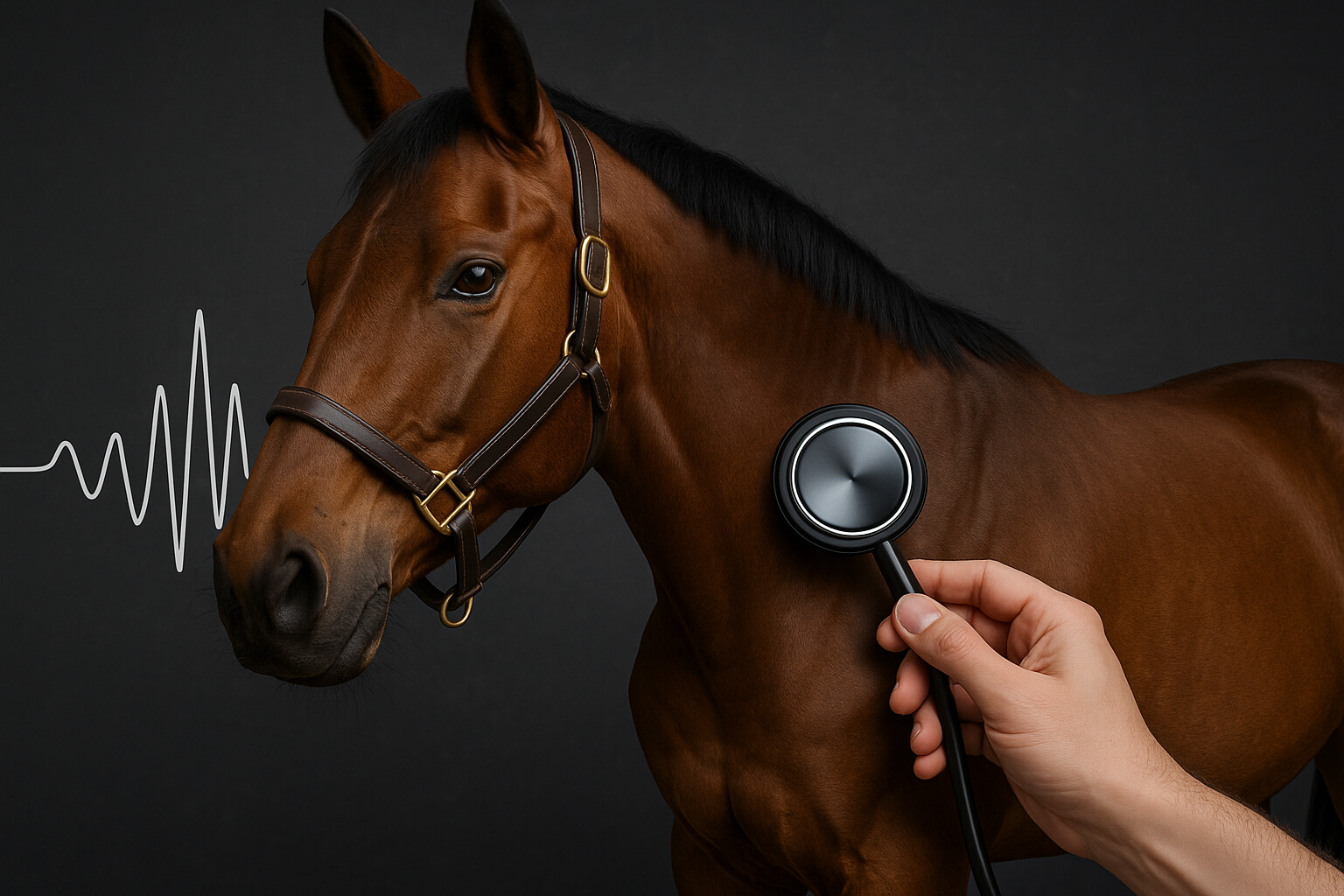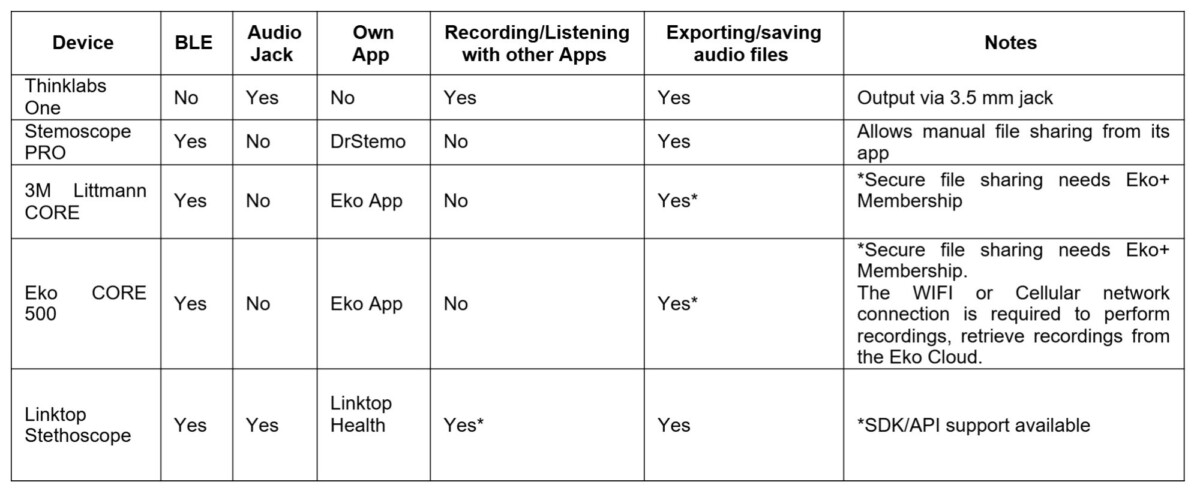
Savonia Article Pro: Technical Review and Integration Strategy: Digital Stethoscopes for Horse Gut Sound Monitoring
Savonia Article Pro is a collection of multidisciplinary Savonia expertise on various topics.
This work is licensed under CC BY-SA 4.0
1. Introduction
In the second pilot of the “Tekoälyä Talleille” project, we are developing a mobile application designed to monitor horse intestinal sounds and identify abnormalities. The application aims to enable daily health monitoring at home stables, promoting a shift from reactive treatment toward preventive veterinary care.
This article presents a technical review of currently available digital stethoscope solutions, evaluates their suitability for integration into our system, and proposes a dual-mode mobile app development strategy tailored for both real-time and offline use.
2. Background and Motivation
Sand ingestion is a common behavioural issue among horses in Finland, particularly affecting the Finnhorse breed. Accumulated sand in the intestines can cause severe or even fatal conditions. Diagnosis typically requires a clinical visit and an abdominal X-ray. However, the presence of sand in the intestines can be detected by listening with a stethoscope—the sounds made by sand are distinctive and different from normal gut activity.
Our goal is to develop an AI-powered solution that enables early detection of such conditions at the stable without the need for expensive imaging equipment or trained personnel. By integrating smart auscultation capabilities into a mobile application, we aim to:
- Empower horse owners and stable staff with a early warning system
- Enable earlier intervention and reduce veterinary costs
- Build a labelled dataset of gut sounds for AI model development
The pilot process begins with selecting suitable digital stethoscopes capable of either streaming or exporting audio recordings. We will then collect, label, and process gut sound data to train an AI model for abnormality detection. Finally, a mobile application will be developed to support both real-time analysis and file-based uploads, enabling efficient and accessible horse health monitoring.

3. Device Survey and Analysis
We analyzed a selection of commercially available digital stethoscopes for their potential integration into our system. The evaluation criteria included:
- Connectivity options (BLE or analog jack)
- File access or exportability
- Availability of application programming interfaces (APIs) or software development kits (SDKs)
- Mobile app compatibility

3.1. Data Collection Capability
Some of these devices can be used for offline data collection, either via:
- Manual export from the proprietary app (e.g., Stemoscope)
- Direct audio recording via 3.5 mm jack (e.g., Thinklabs, Linktop)
This makes them suitable for the initial creation of an audio dataset needed for training AI models.
3.2. Real-Time Signal Access Limitations
Most digital stethoscopes lack open SDKs or real-time BLE access, limiting our ability to integrate them into live-streaming features of a custom app. This is a critical constraint for applications requiring real-time audio analysis.
4. Mobile Application Strategy and Design
Given the technical constraints and opportunities, we propose a hybrid application model that supports two distinct workflows:
4.1. Real-Time Live Monitoring Mode
– Uses BLE (if supported) or analog jack for live input
– Displays real-time waveforms
– Runs on-device AI analysis for immediate feedback
4.2. Post-Recording Upload and Analysis Mode
– Sound is recorded via the manufacturer’s proprietary app
– User shares/export the recording (e.g., .wav, .mp3) if possible
– User uploads file to our app for AI-based analysis
This dual approach ensures both flexibility and broader hardware compatibility.
5. Conclusion
Despite the limitations in real-time SDK/API access, several digital stethoscopes allow data export through their apps. This makes them viable tools for collecting gut sound data and initiating AI development.
To meet both short-term data acquisition needs and long-term scalability, our proposed roadmap includes:
- Starting data collection immediately with devices that support file exports
- Engaging with manufacturers to gain access to SDKs for real-time integration
- Developing a dual-mode mobile app to support both live monitoring and offline analysis
This strategy provides flexibility in hardware use, ensures data-driven development, and lays the groundwork for a robust mobile AI solution in equine healthcare.
Authors:
Osman Torunoglu, RDI Specialist, DigiCenter – osman.torunoglu@savonia.fi
Johannes Geisler, RDI Specialist, DigiCenter – johannes.geisler@savonia.fi
Finlay Hare, RDI Project Worker, DigiCenter – finlay.hare@savonia.fi
Aki Happonen, Digital Development Manager, DigiCenter – aki.happonen@savonia.fi
Heli Suomala, Project Manager and Expert, Finnish Horse Information Centre – heli.suomala@hevostietokeskus.fi

Article has been previously published at https://hevostietokeskus.fi/i/hankkeet/meneillaan-olevat/tekoalya-talleille/ajankohtaista-hankkeesta/digitaaliset-stetoskoopit-hevosten-suolistoaanten-seurannassa